
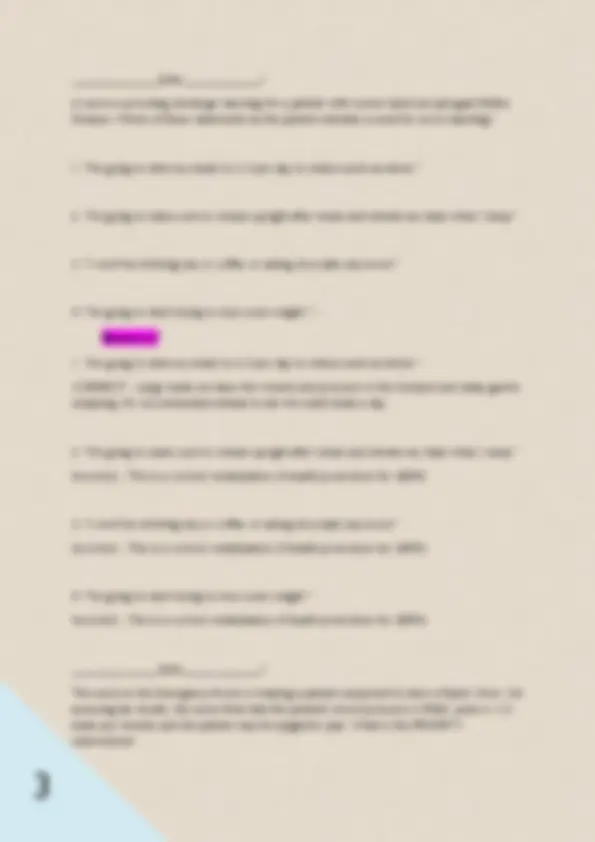
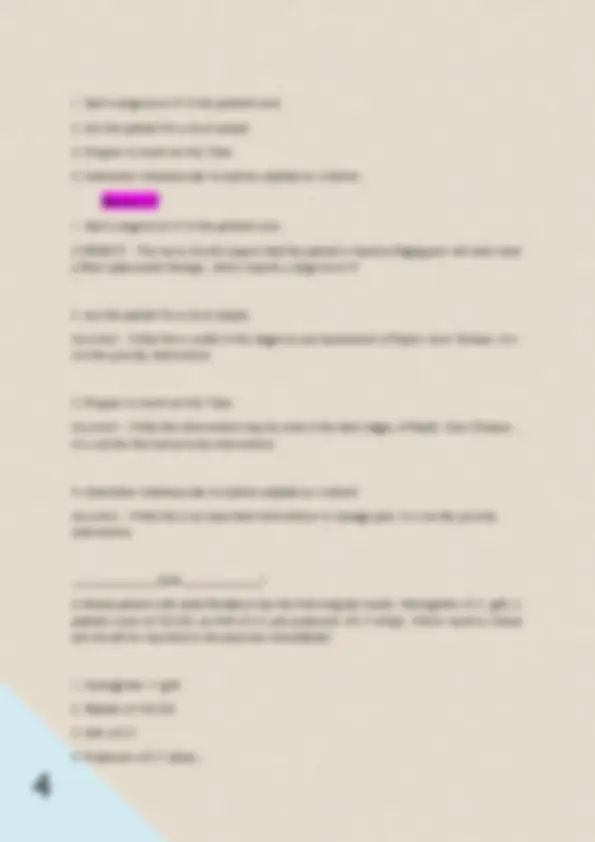
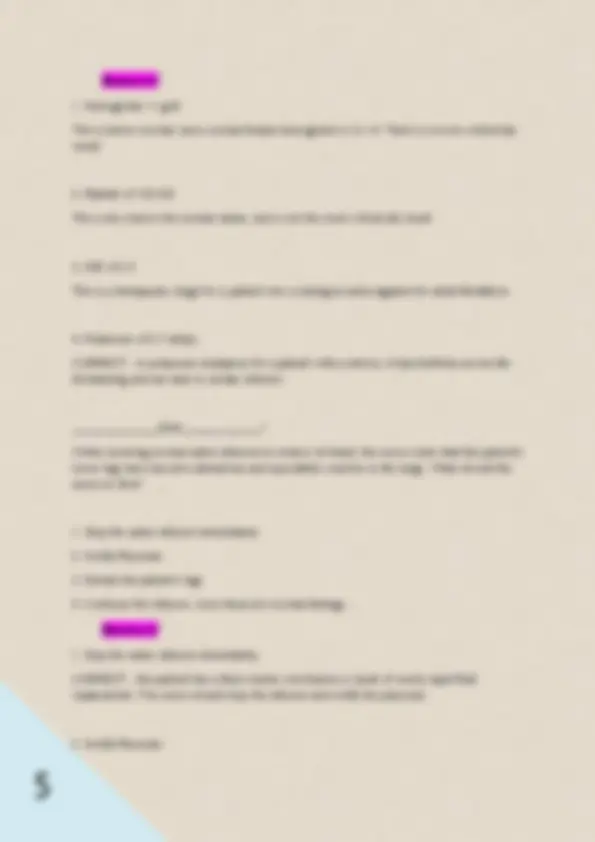
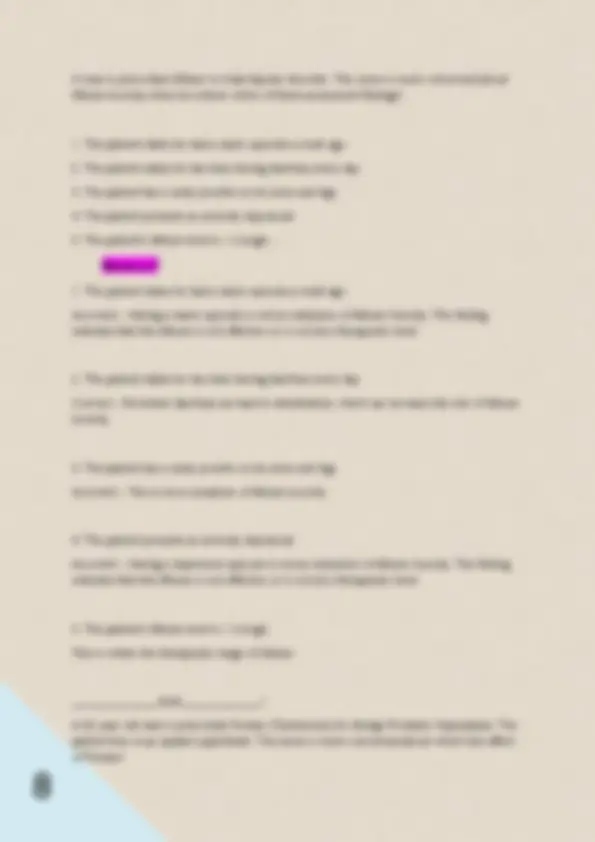
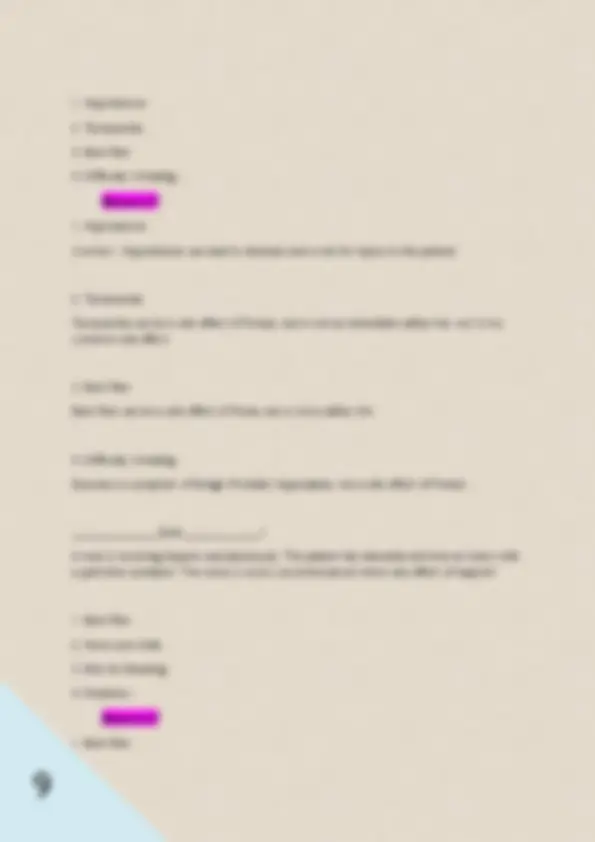
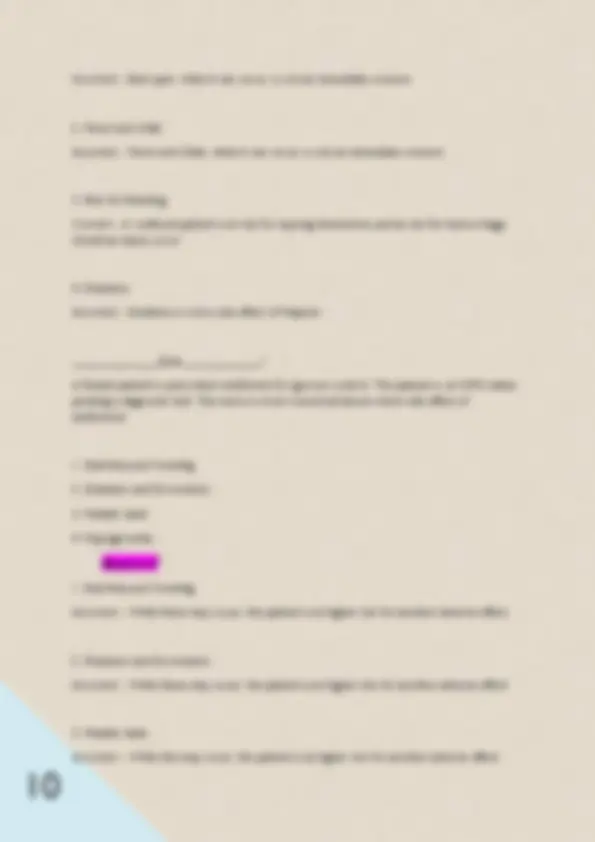
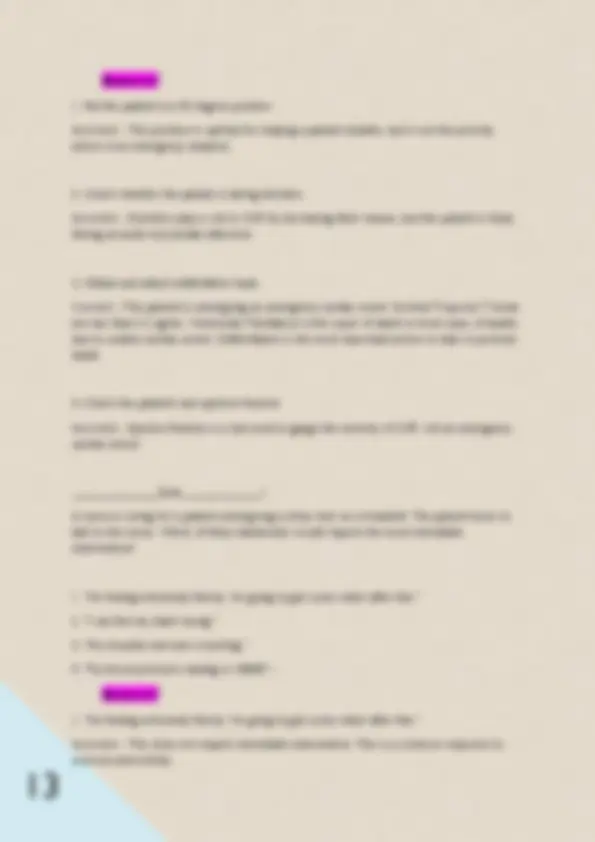
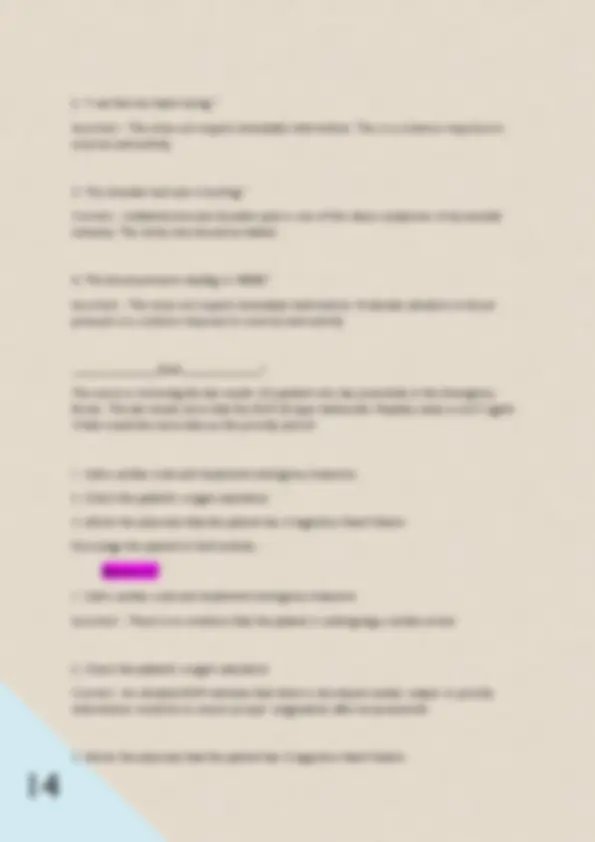
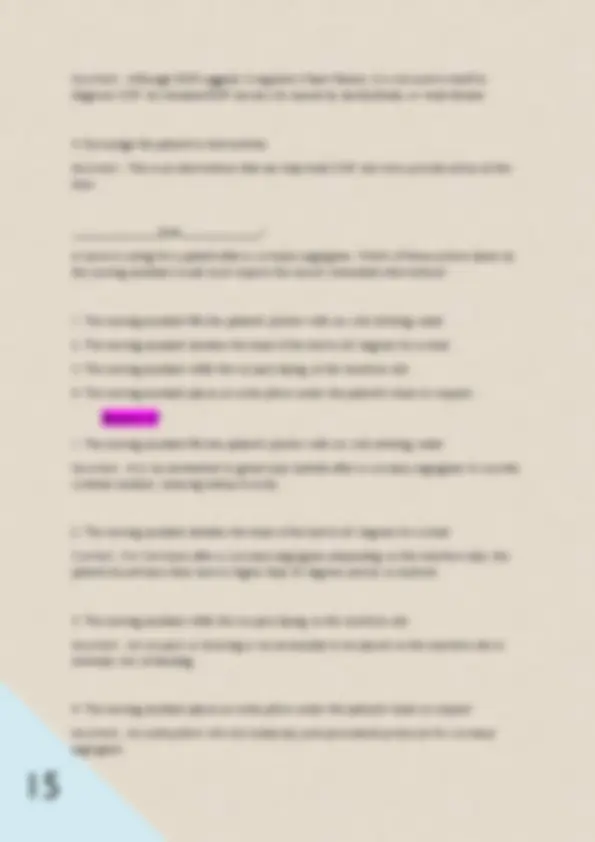
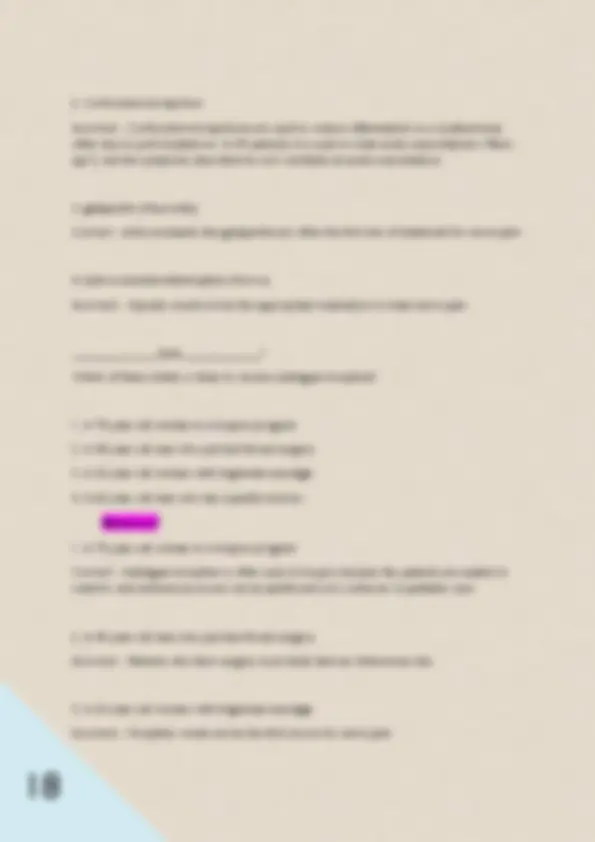
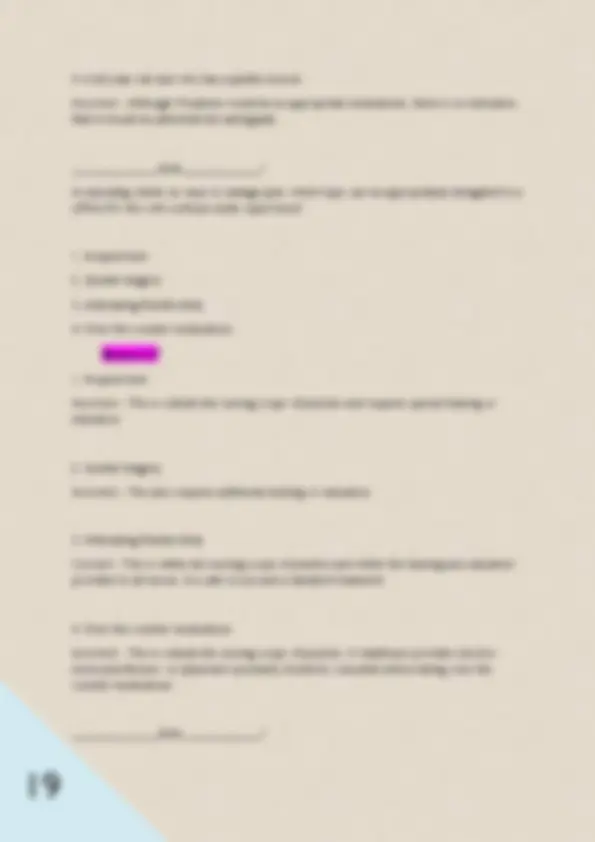

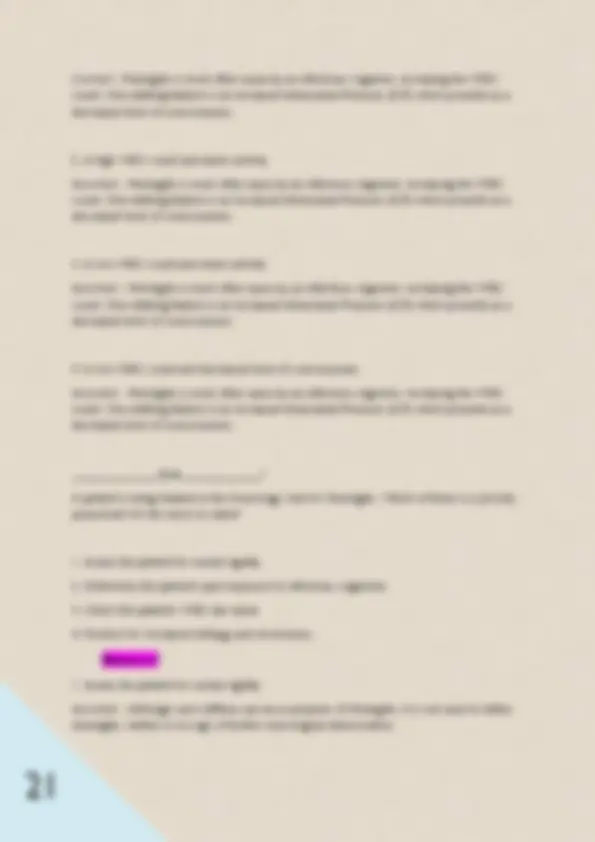
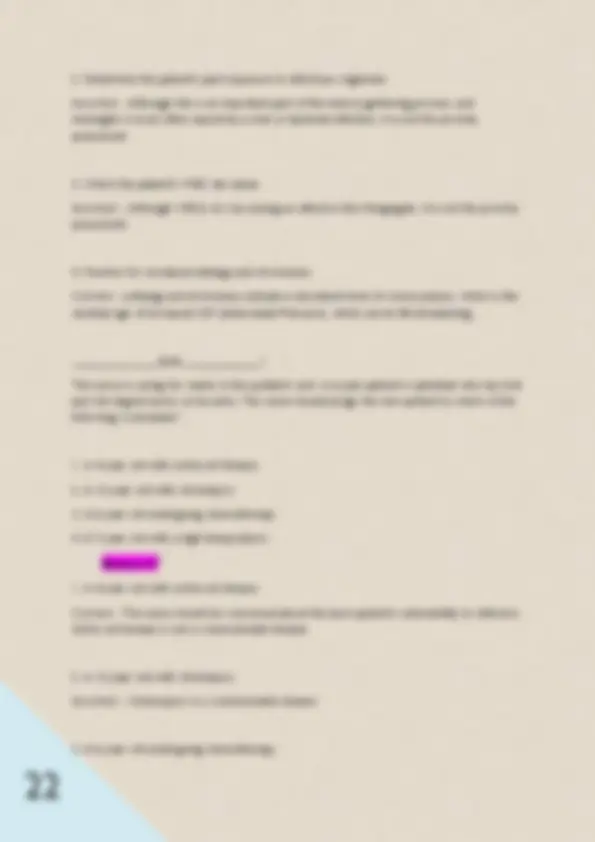
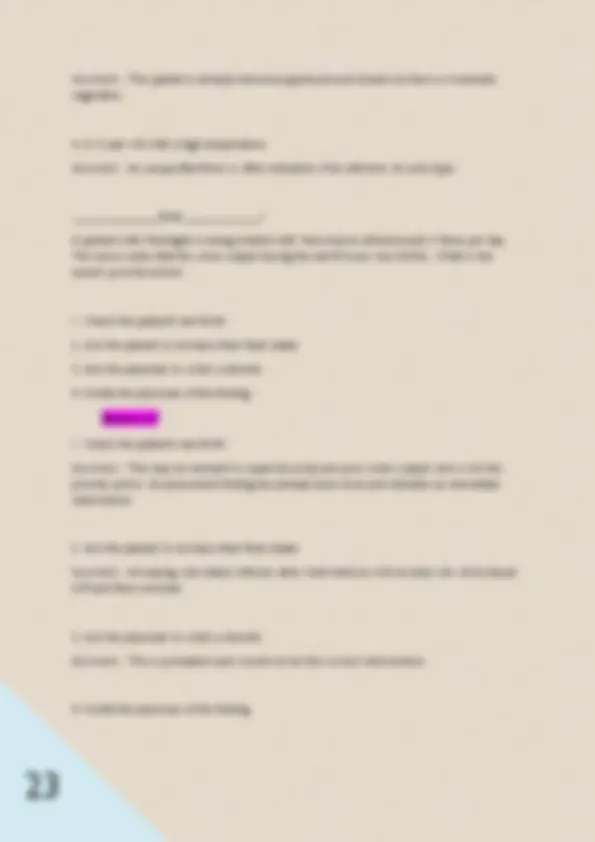
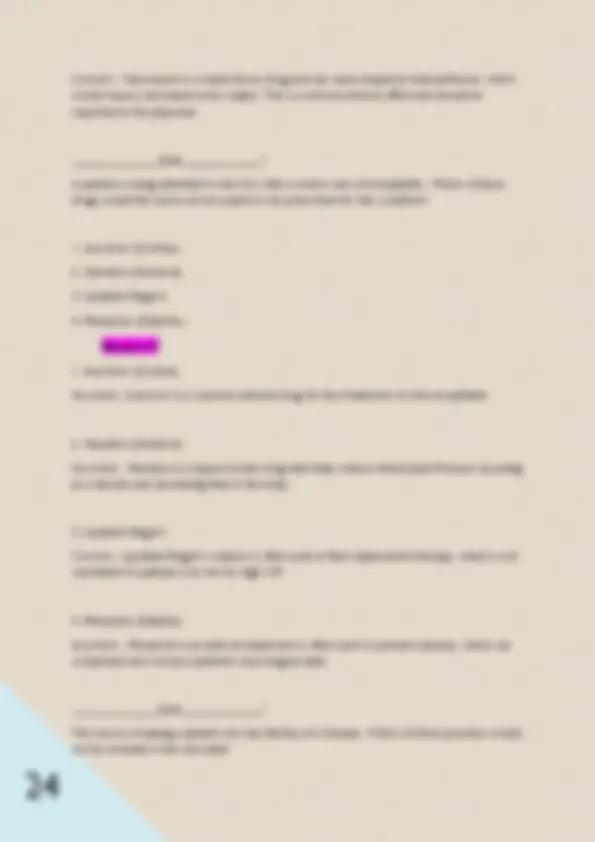
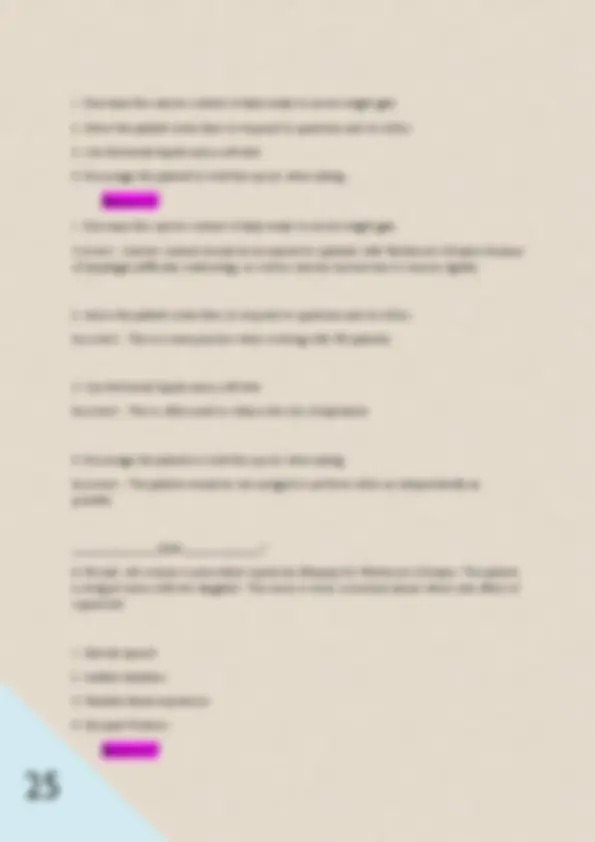
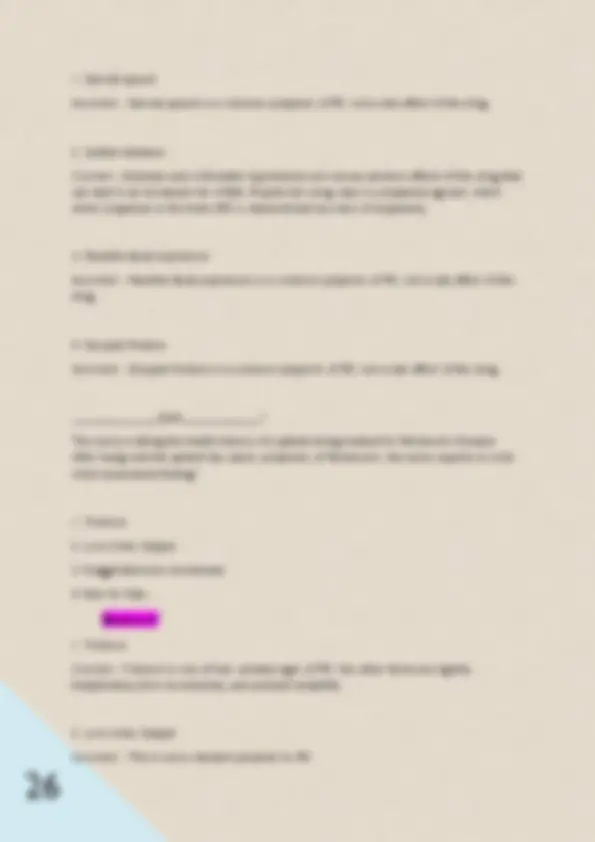
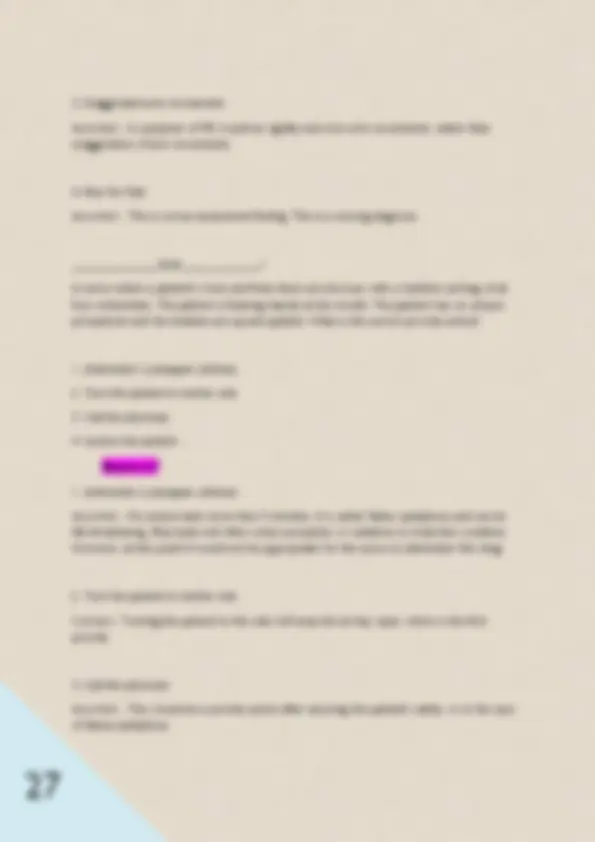
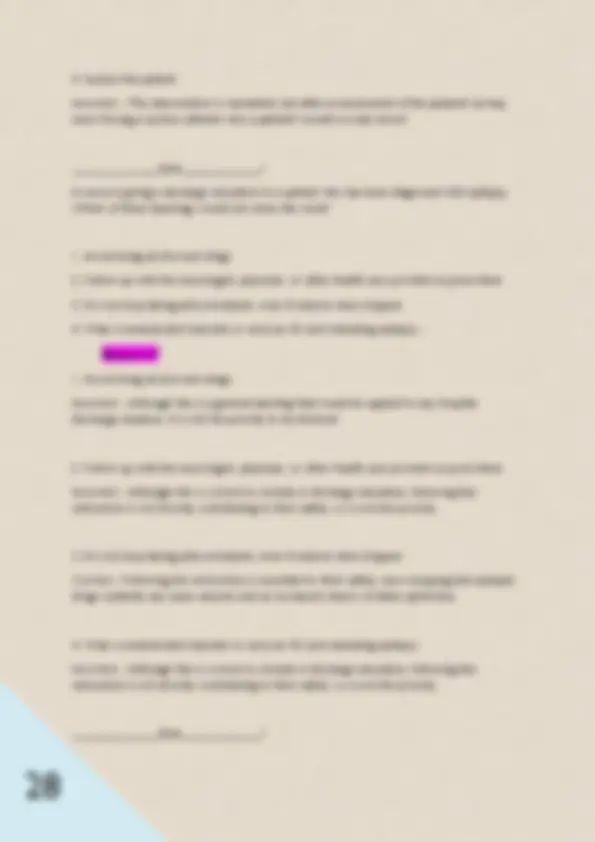
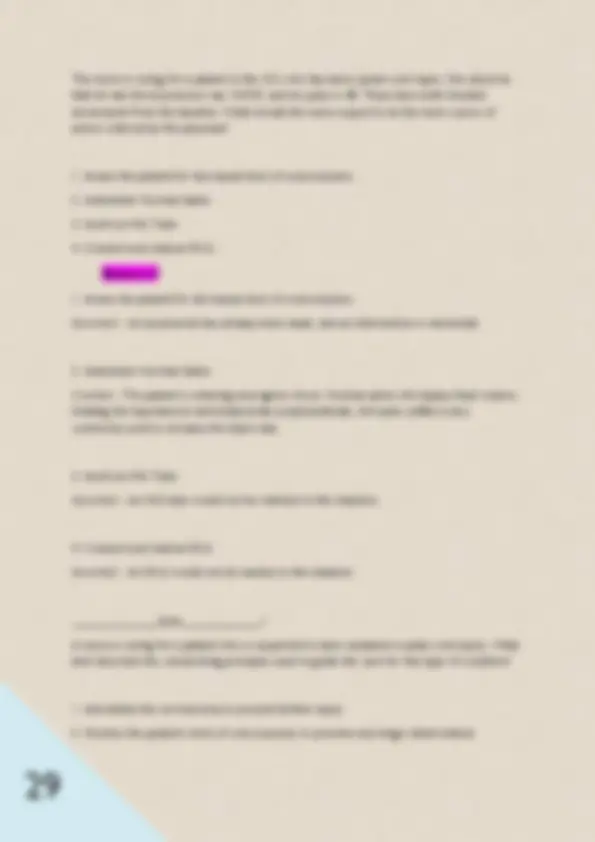
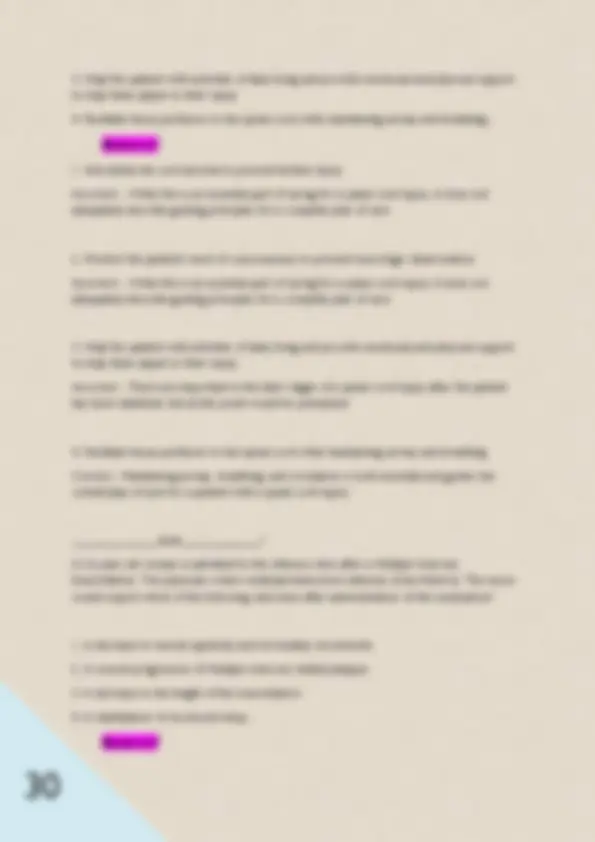

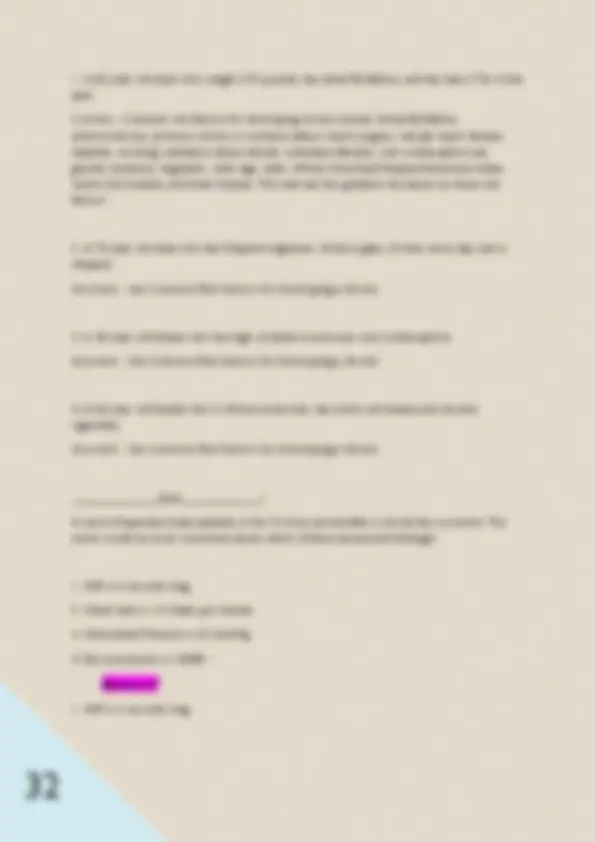
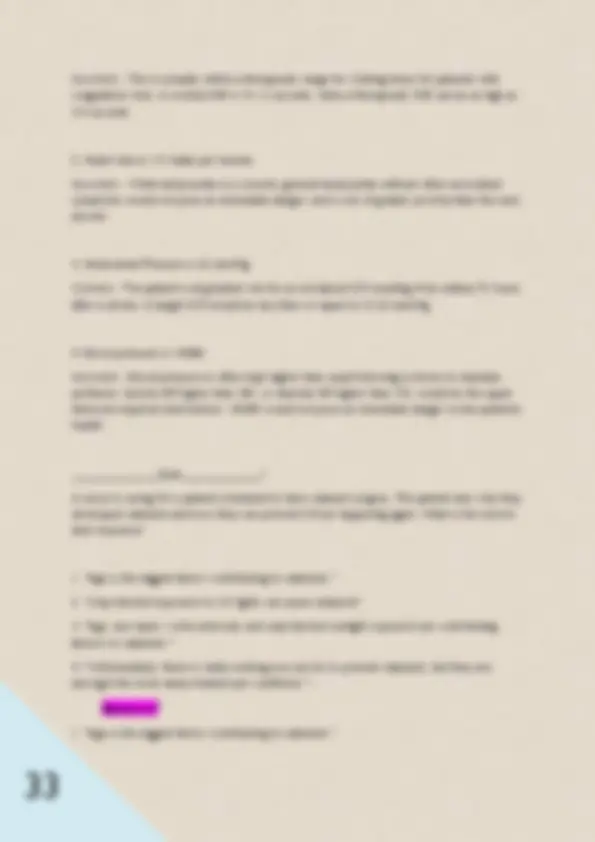
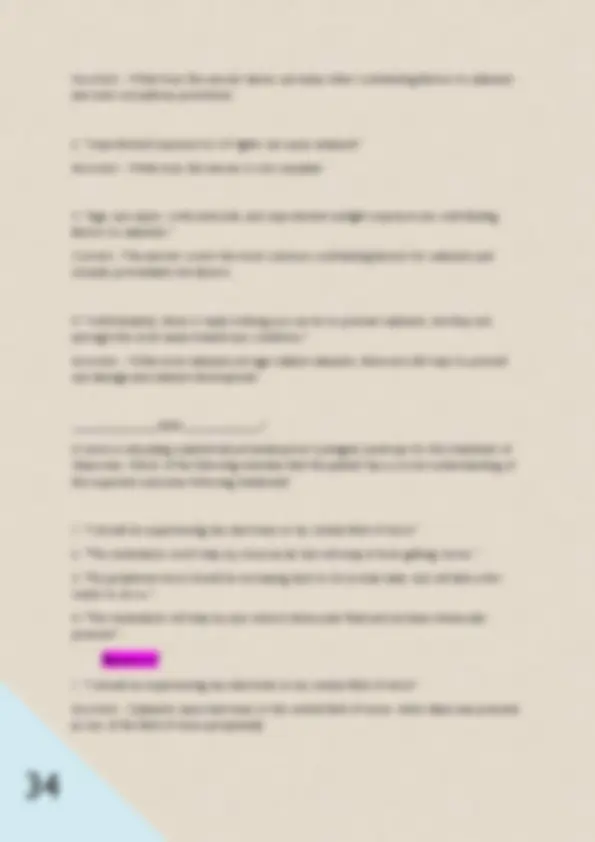
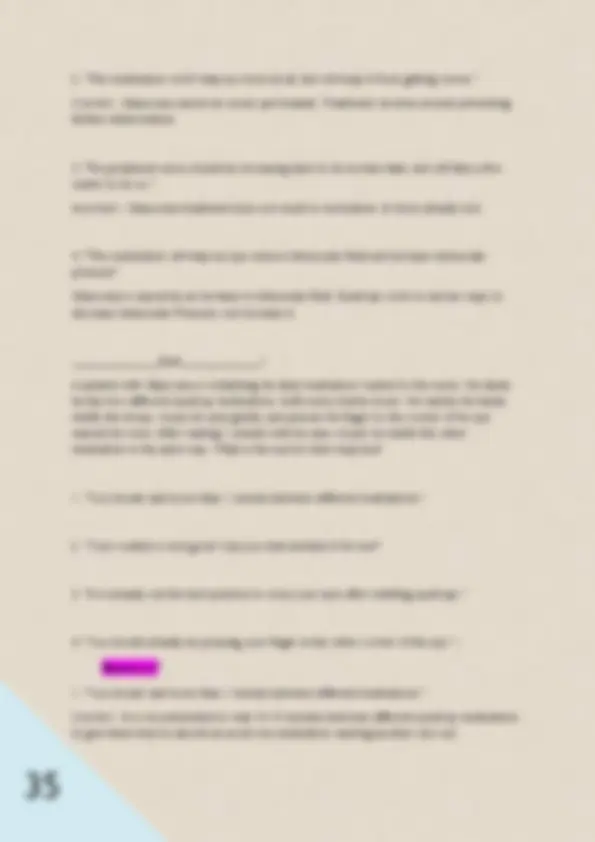
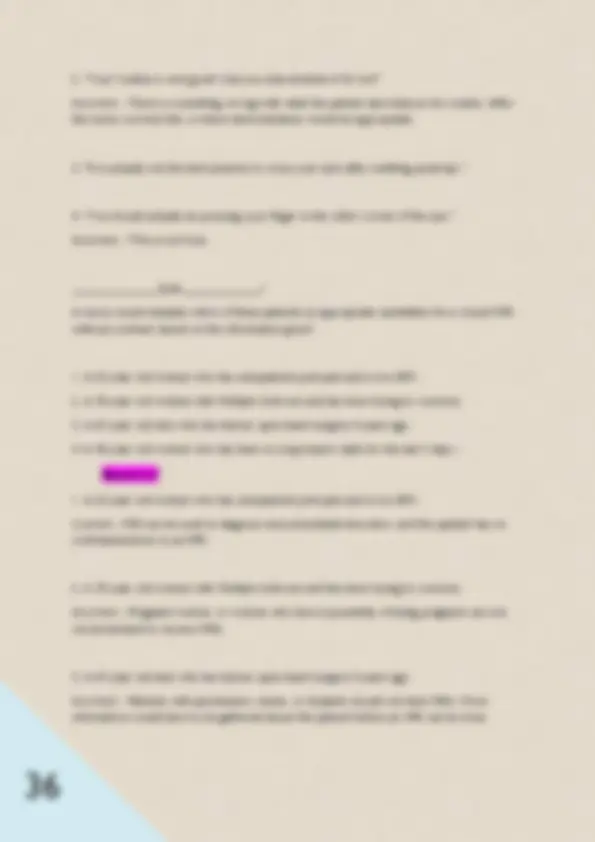
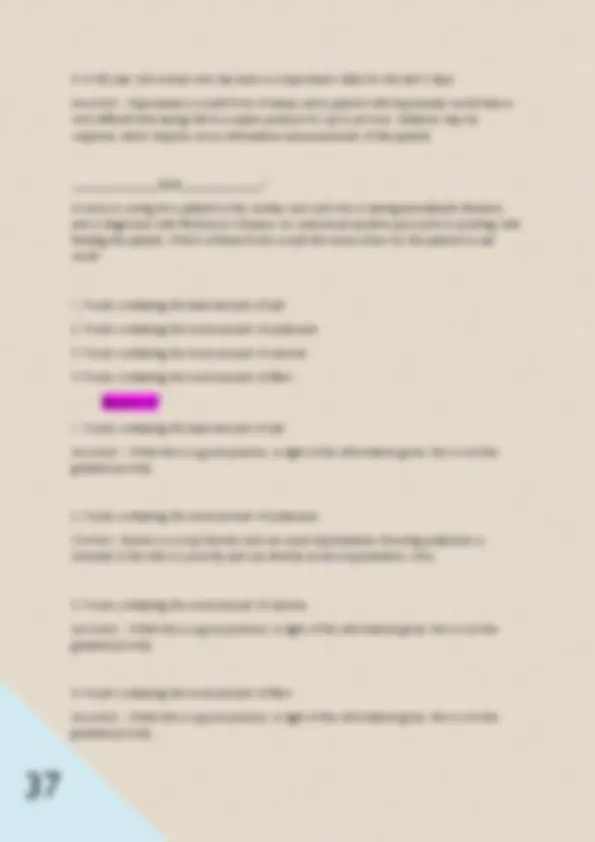
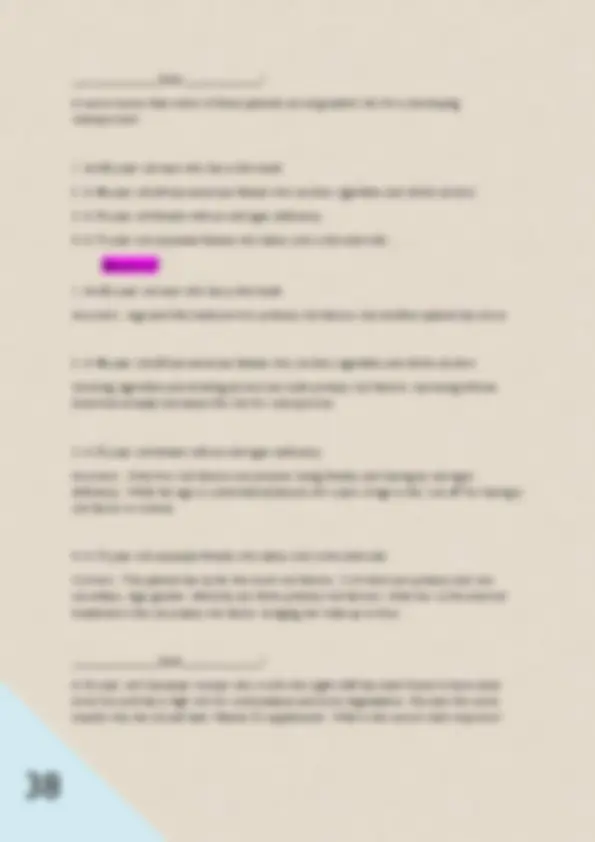
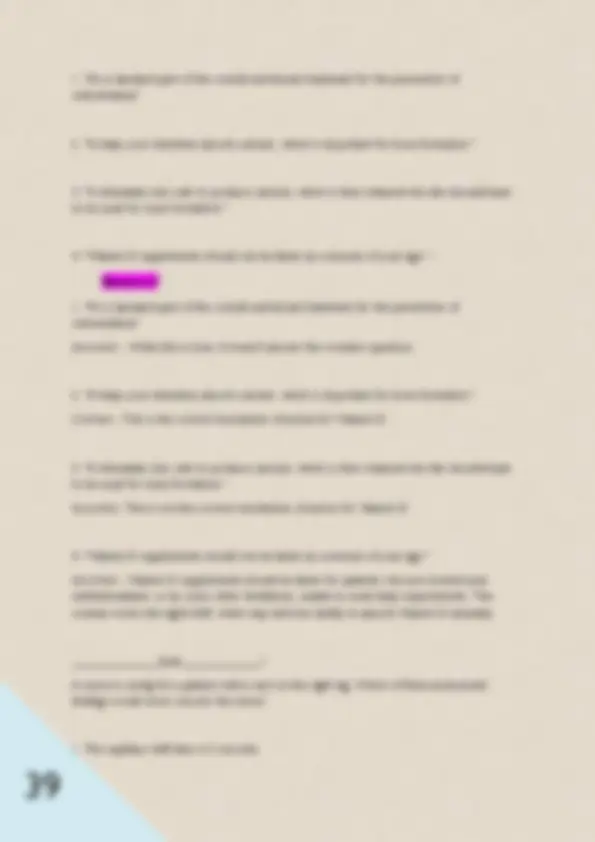
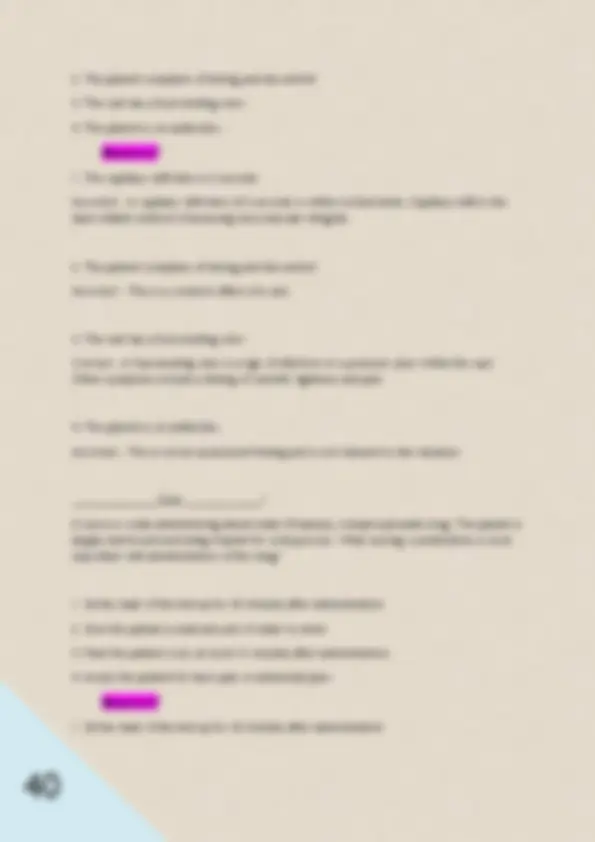
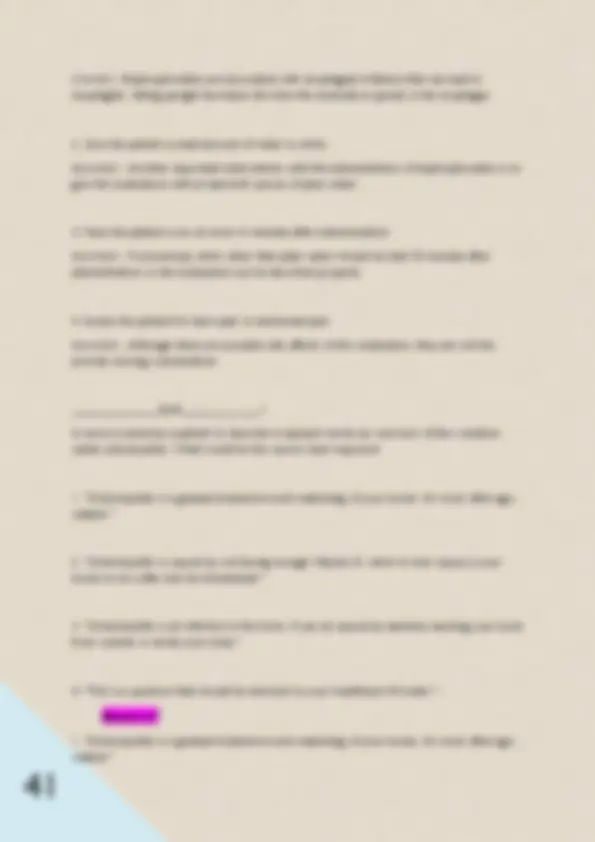
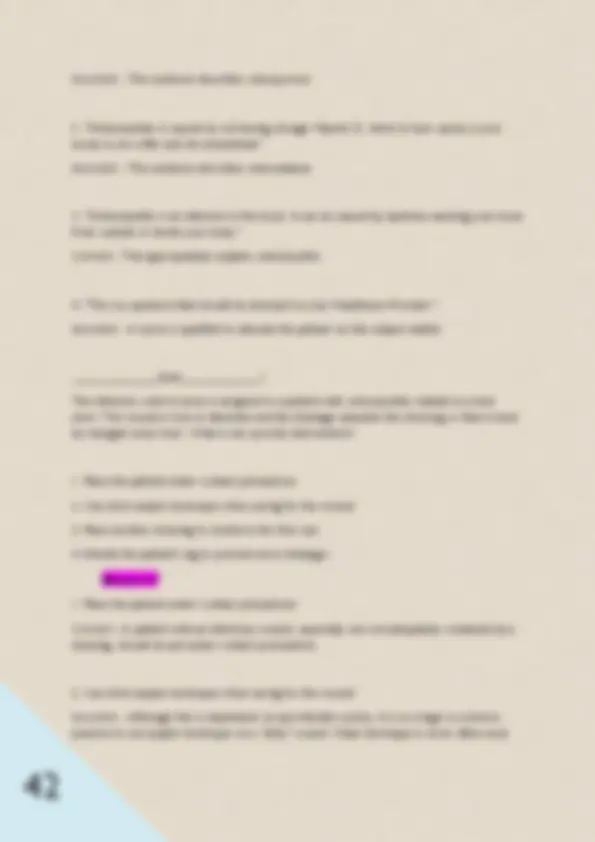
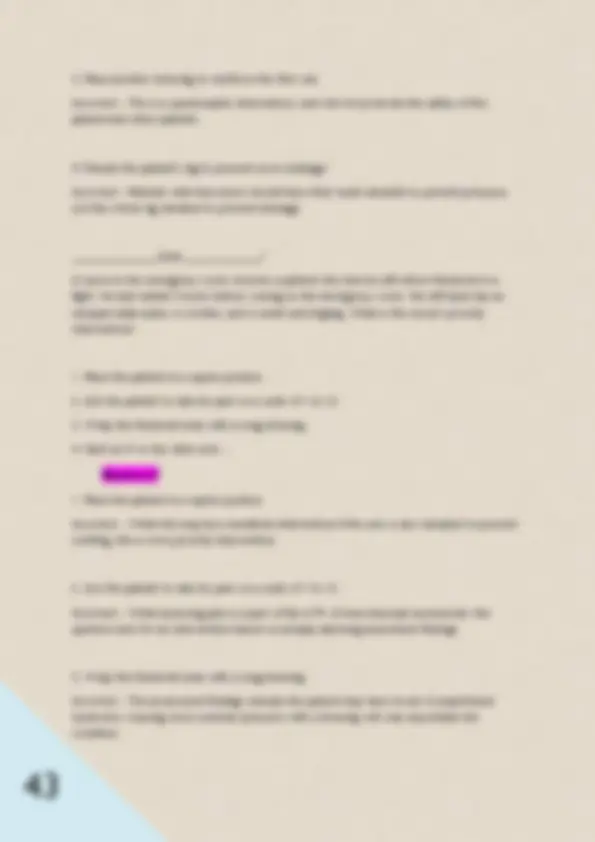
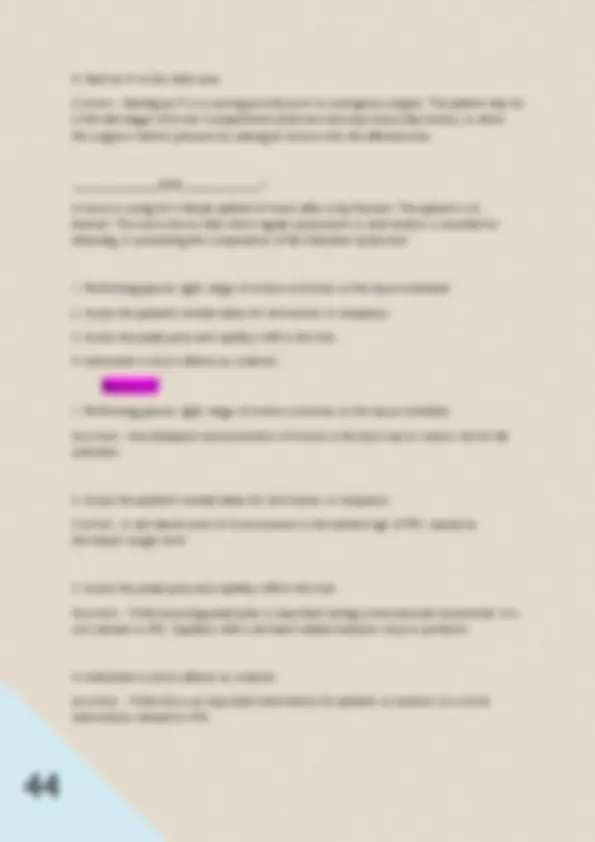
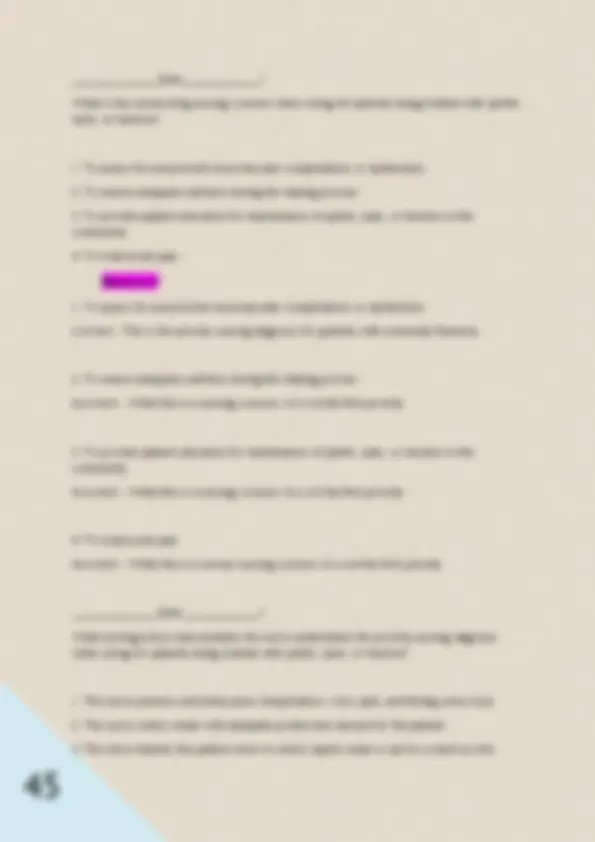
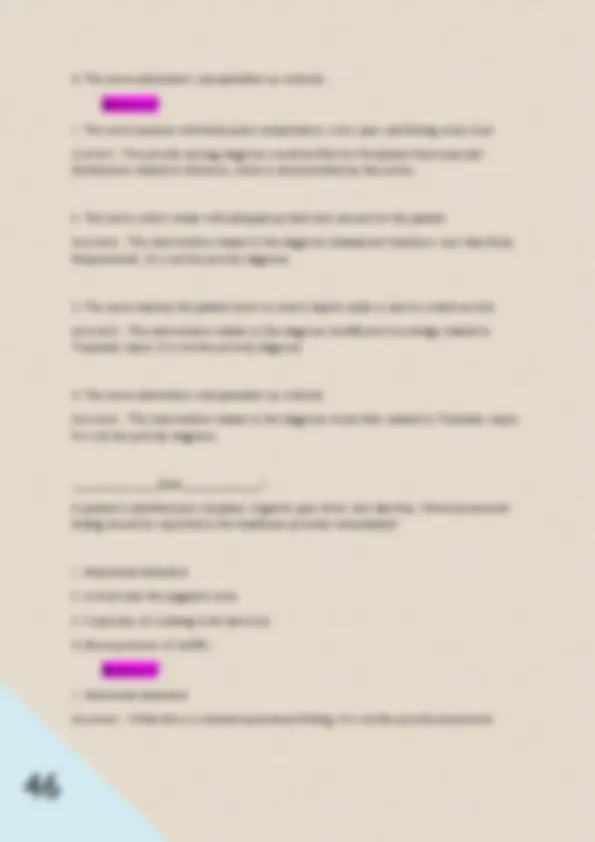
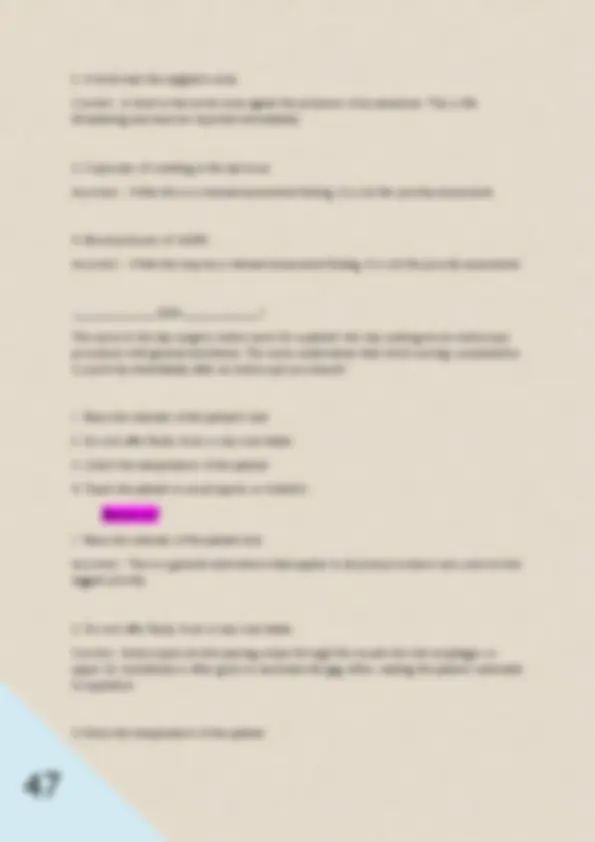
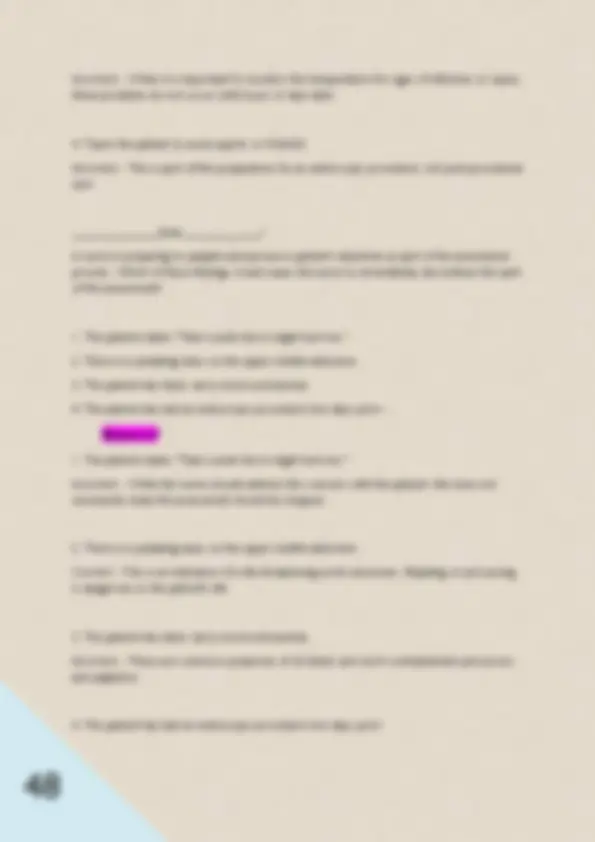
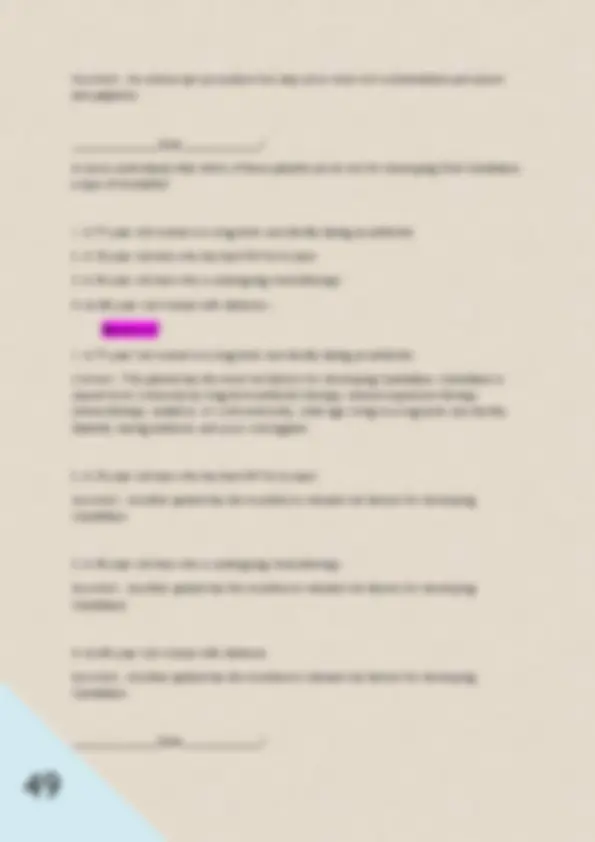
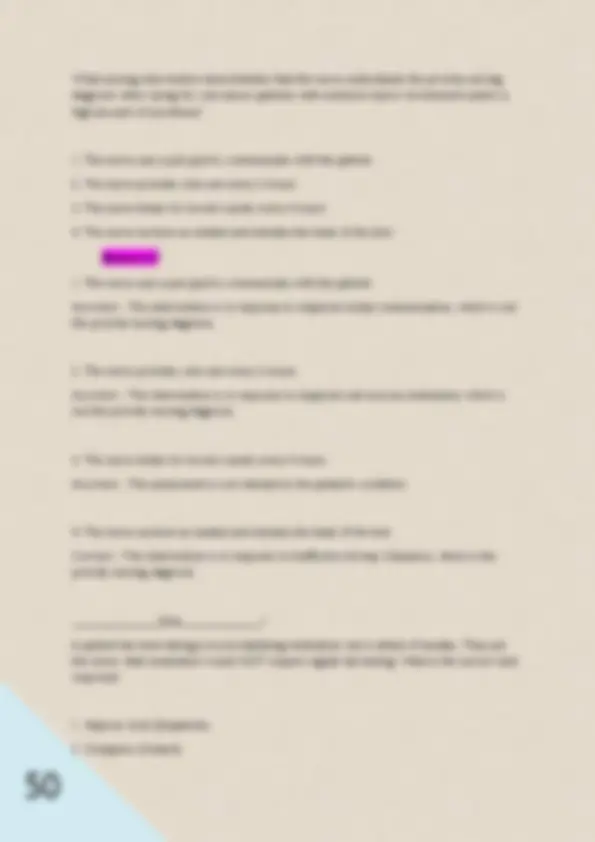
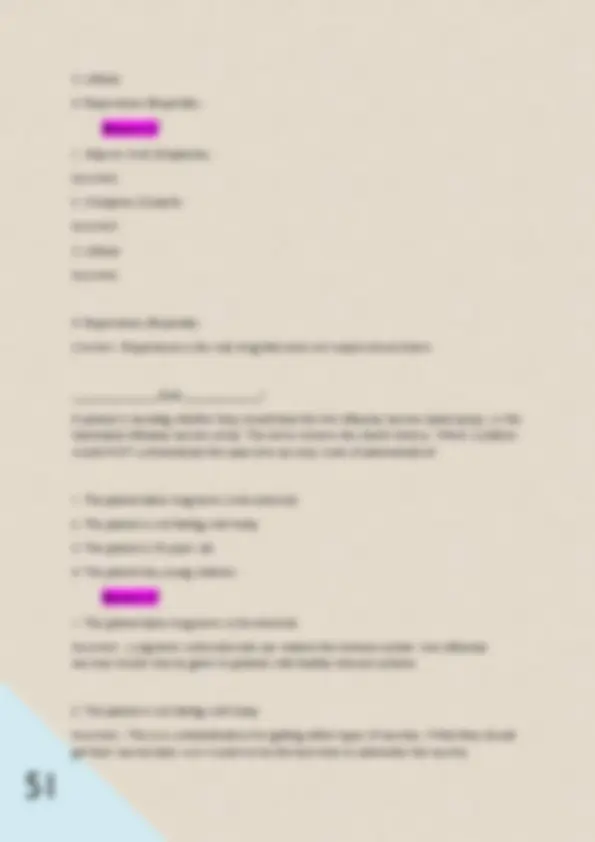
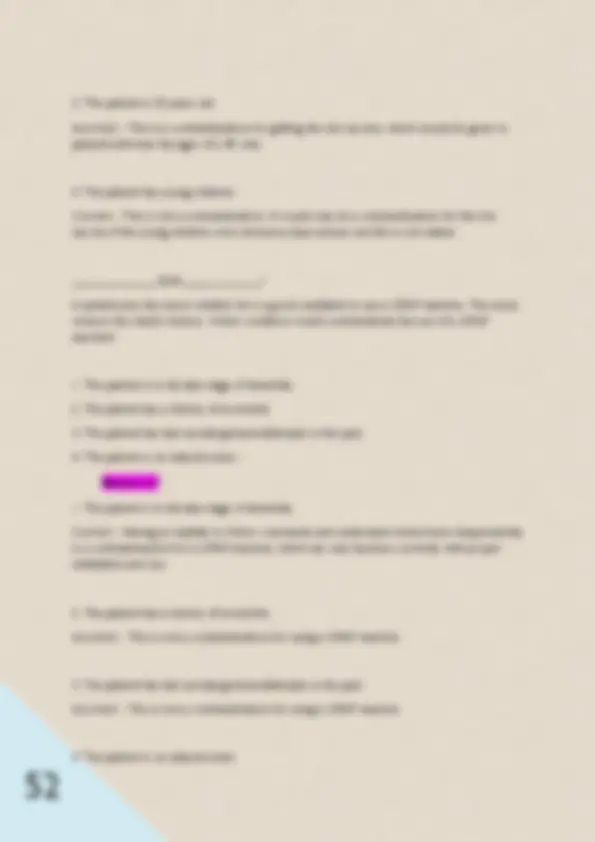
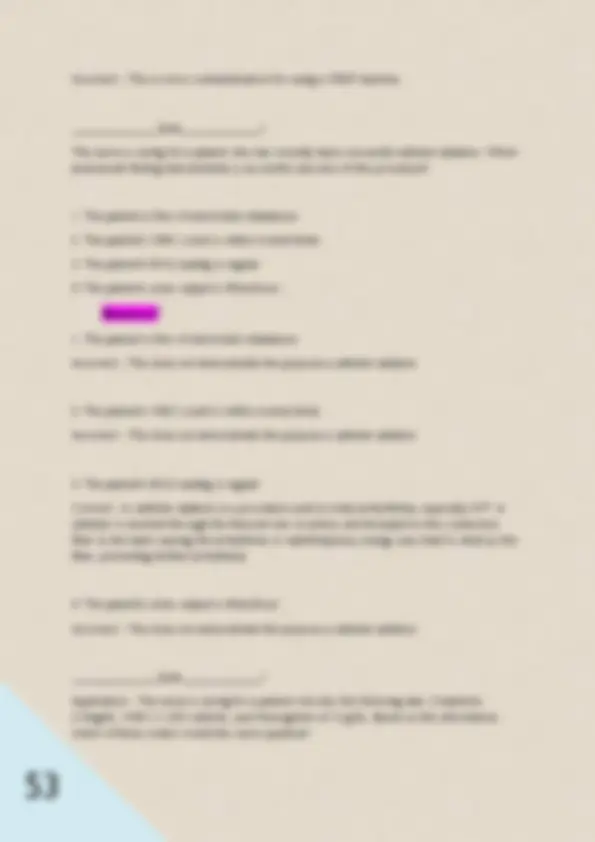
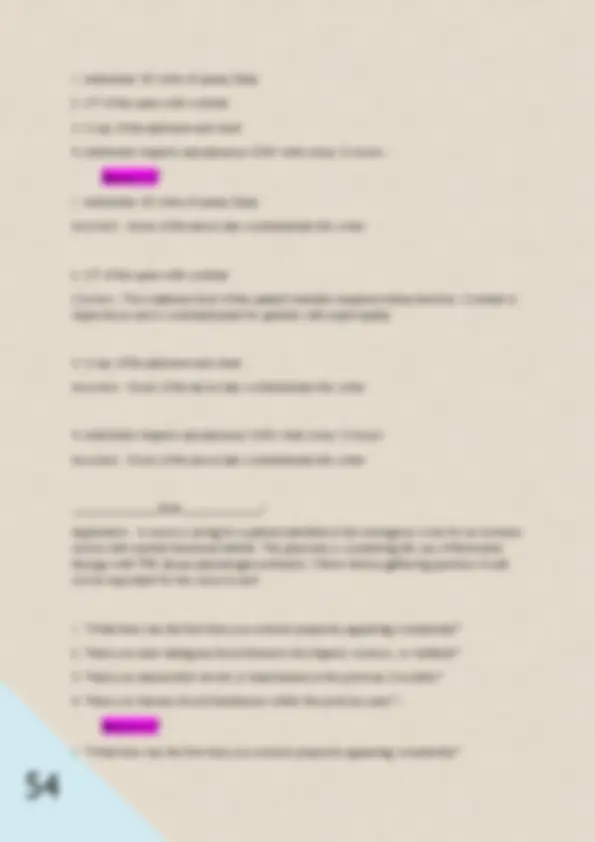

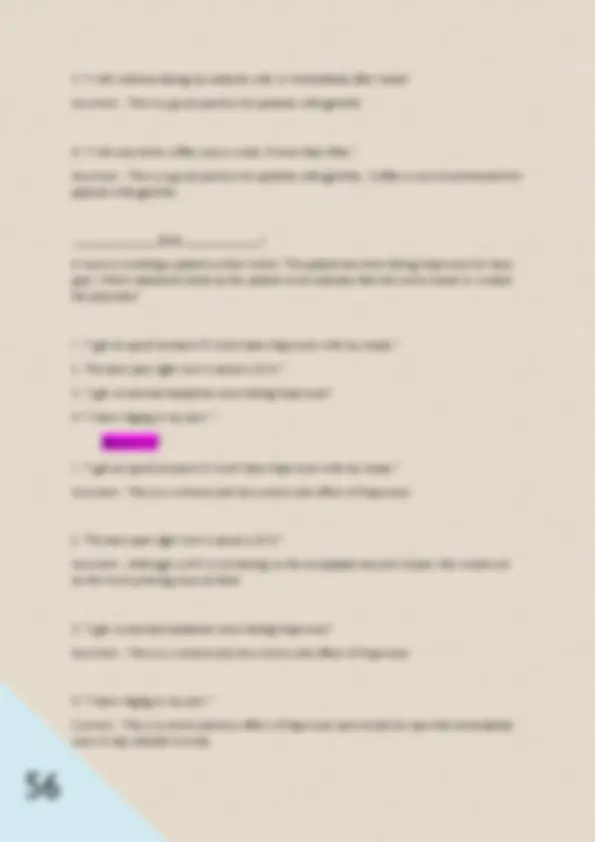
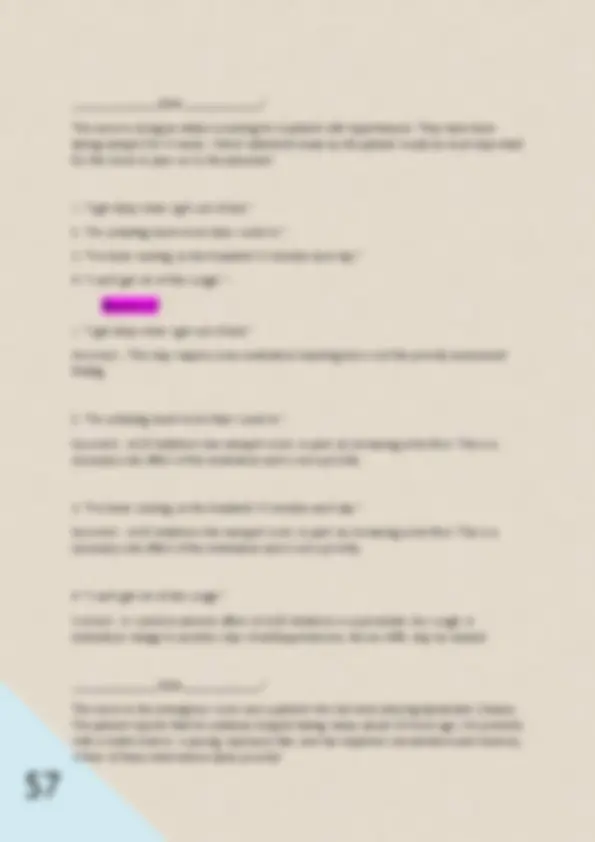
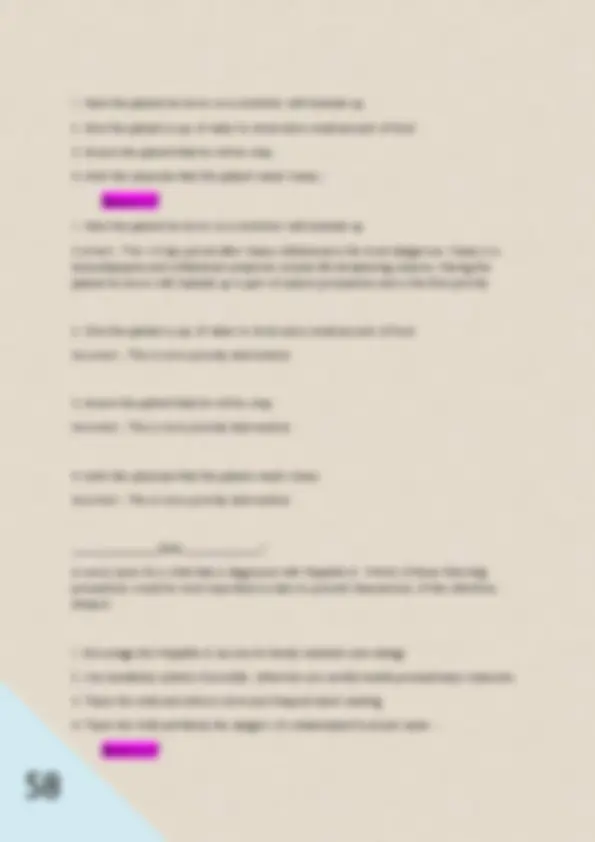
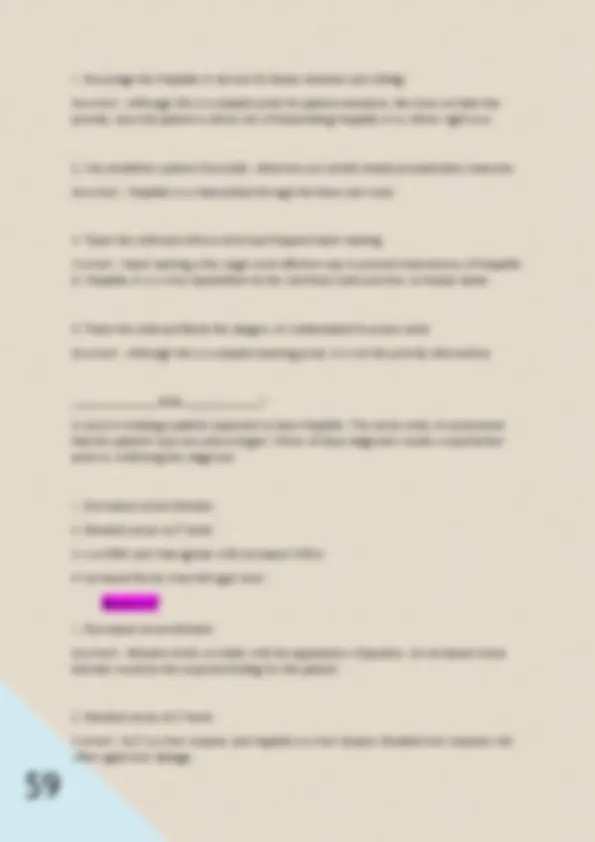
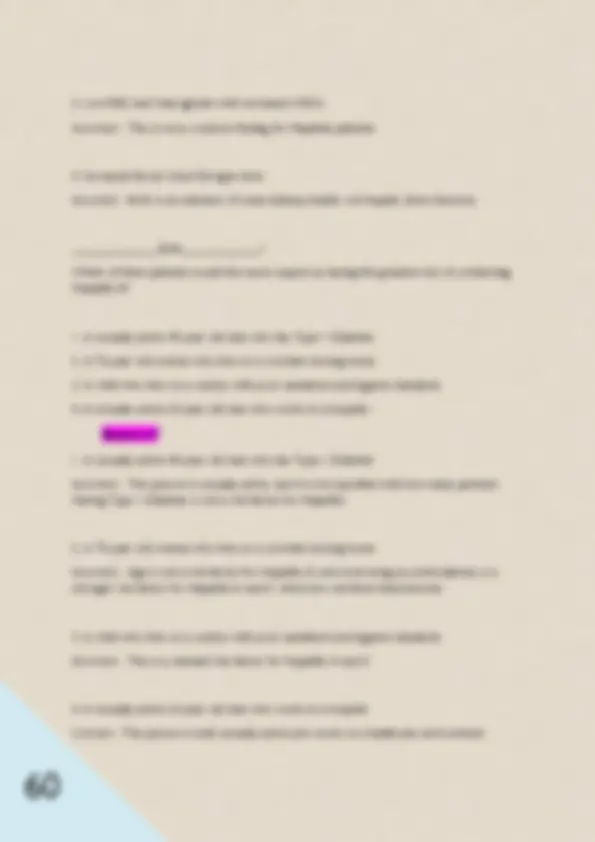
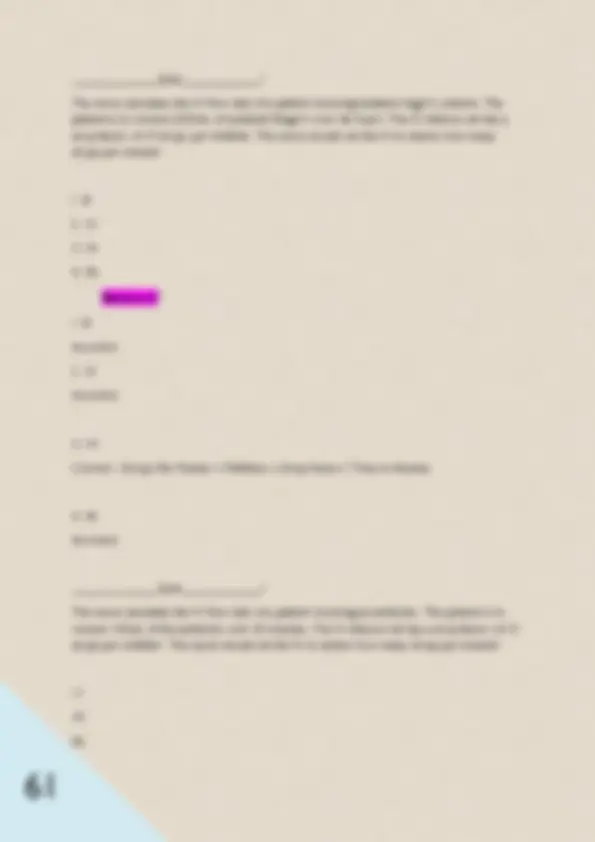
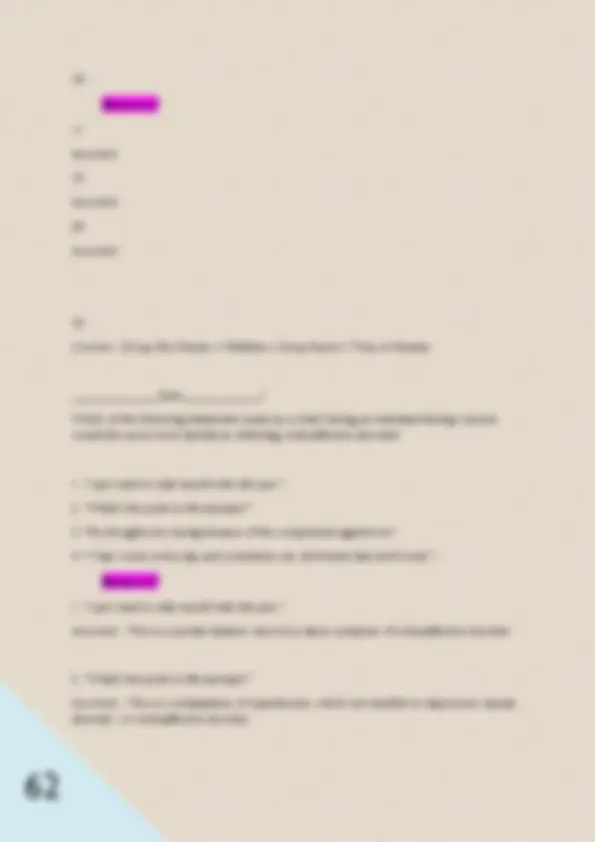
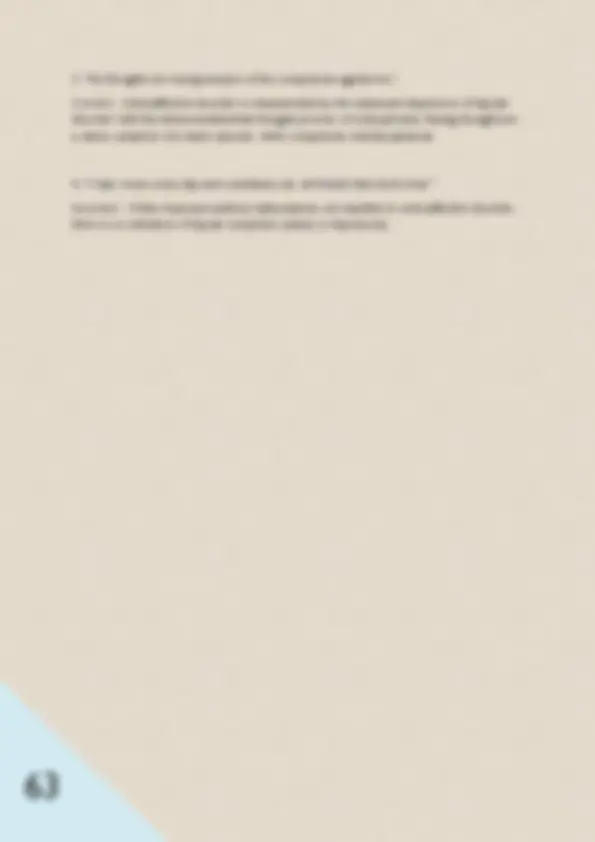


Study with the several resources on Docsity

Earn points by helping other students or get them with a premium plan


Prepare for your exams
Study with the several resources on Docsity

Earn points to download
Earn points by helping other students or get them with a premium plan
Community
Ask the community for help and clear up your study doubts
Discover the best universities in your country according to Docsity users
Free resources
Download our free guides on studying techniques, anxiety management strategies, and thesis advice from Docsity tutors
75 Free NCLEX Questions - c/o BrilliantNurse.com / Updated Questions with 100% Correct Answers, 2025 / 2026. _____________Quiz____________? The nurse is taking the health history of a patient being treated for Emphysema and Chronic Bronchitis. After being told the patient has been smoking cigarettes for 30 years, the nurse expects to note which assessment finding? 1. Increase in Forced Vital Capacity (FVC) 2. A narrowed chest cavity 3. Clubbed fingers 4. An increased risk of cardiac failure - Answer✓✓ 1. Increase in Forced Vital Capacity (FVC) Forced Vital Capacity is the volume of air exhaled from full inhalation to full exhalation. A patient with COPD would have a decrease in FVC. Incorrect. 2. A narrowed chest cavity A patient with COPD often presents with a 'barrel chest,' which is seen as a widened chest cavity. Incorrect. 3. Clubbed fingers - CORRECT Clubbed fingers are a sign of a long-term, or chronic, decrease in oxygen levels. 4. An increased
Typology: Exams
1 / 63

This page cannot be seen from the preview
Don't miss anything!
























































_____________Quiz____________? The nurse is taking the health history of a patient being treated for Emphysema and Chronic Bronchitis. After being told the patient has been smoking cigarettes for 30 years, the nurse expects to note which assessment finding?
Incorrect - Avoiding large crowds to prevent infection is a priority in the later stages of HIV, when the patient has AIDS. _____________Quiz____________? A nurse finds a 30-year-old woman experiencing anaphylaxis from a bee sting. Emergency personnel have been called. The nurse notes the woman is breathing but short of breath. Which of the following interventions should the nurse do first?
A man is prescribed lithium to treat bipolar disorder. The nurse is most concerned about lithium toxicity when he notices which of these assessment findings?
Incorrect - Back pain, while it can occur, is not an immediate concern
_____________Quiz____________? A man is has been taking lisinopril for CHF. The patient is seen in the emergency room for persistent diarrhea. The nurse is concerned about which side effect of lisinopril?
The nurse assesses a patient suspected of having an asthma attack. Which of the following is a common clinical manifestation of this condition?